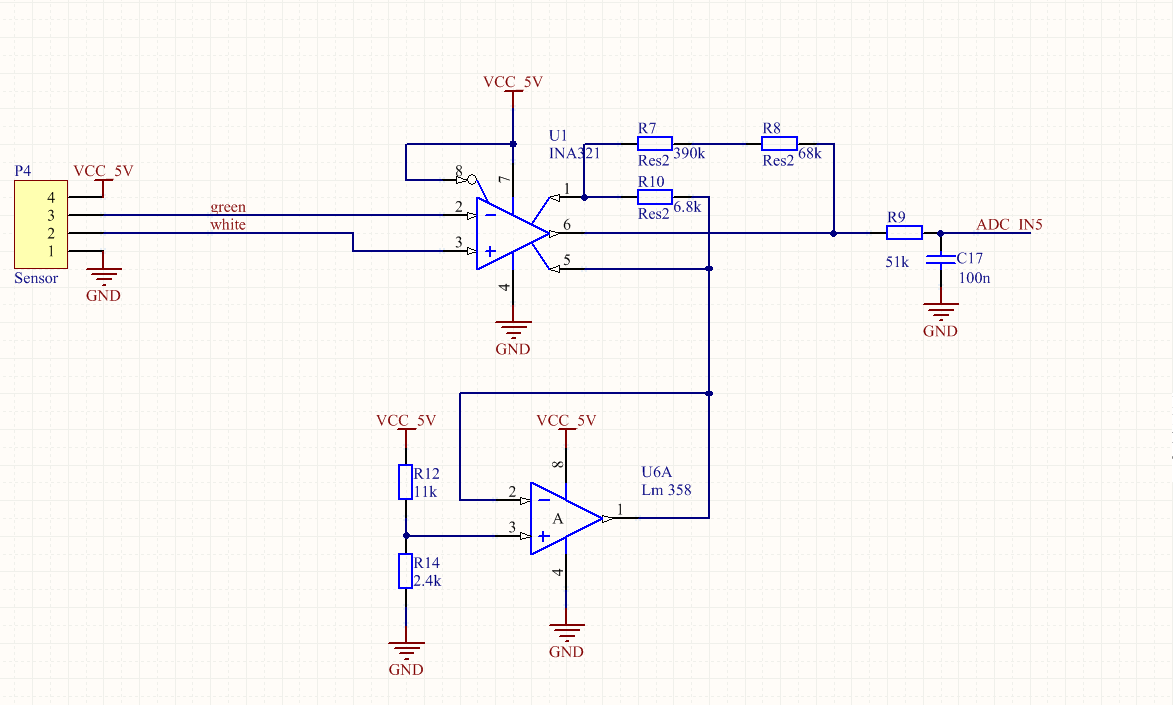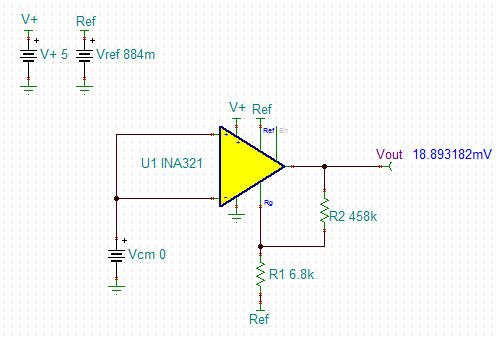Hello,
I am using the INA321 amplifier to amplify the signal coming from a pressure sensor. The reference is set by a LM358 operational amplifer and is equal to ~884mV. The output is filtered by a simple RC high pass filter. If the voltage on the input is 0mV the output should be the same as reference (884mV), but unfortunately I get 0mV. If I attach the sensor the gain (which is 342, set by resistors) seems alright, and the output is ~344mV, if the input is 1mV. Is there something wrong with my schematics (attached) or I misread something about the INA321?



